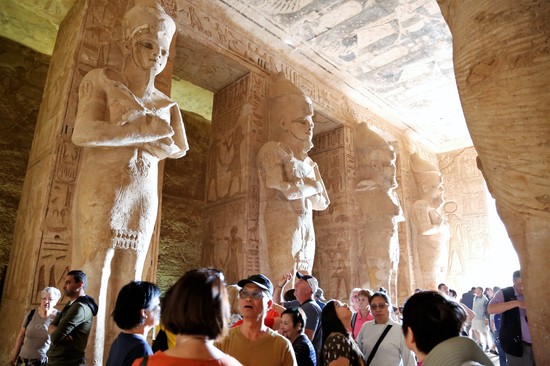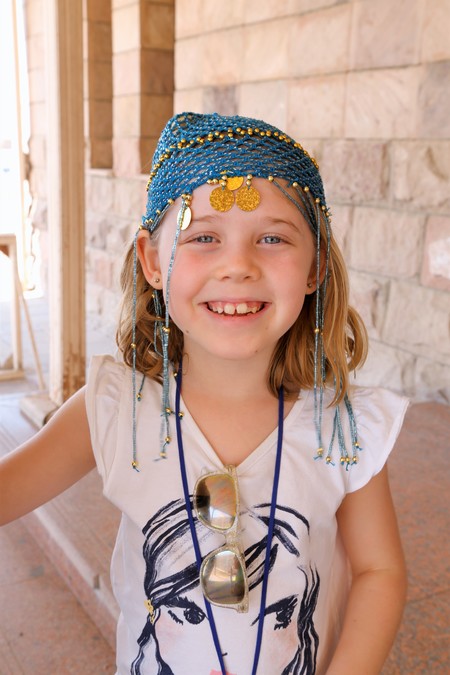Hello again. Hopefully you aren’t sick of Egypt yet, as I still have one more post to do. Here are the first 3 in the series, in the event you missed them:
Nia’s Blog Post (As in, Nia wrote it and took the pictures)
My Blog Post about Nia in Egypt
Extraordinary Egypt Part 1 – An overview of our days in Cairo and Luxor
Actually, I’m going to continue a bit with Luxor today, as we only hit the East bank stuff in my last post. The West bank of Luxor has a whole host of other treasures!
Luxor’s Valley of the Kings
Originally Pharoahs (and their treasures) were buried in temples but that was like putting a “Hello, please rob me!” sign out for the robbers. So around 1500 BC they started doing burials underground in unmarked tombs in a valley outside Luxor. This valley is famously known as the Valley of Kings. There is also a separate valley for the Queens (which we unfortunately didn’t have time to see).
As you can see in the picture below, the Valley was very stark. Every so often there would be a stairway cutout and a sign indicating what tomb it was.

We would then descend down through various tunnels, annexes and rooms until we reached the burial chamber where the sarcophagus was kept.

Here is an example of what one of the sarcophaguses looked like. Usually every available inch of wall space in the entire tomb (ceilings included) was filled with hieroglyphics, carvings and vibrant paintings.

Definitely an experience I would recommend to anyone, as long as you don’t get claustrophobic. The air got really stuffy down there and it was very difficult to maintain any kind of personal space due to the massive amount of tourists.
I should mention that we did pass King Tut’s tomb in the valley but skipped it because it was another $60 to enter and our guide said it wasn’t that cool; a lot smaller than the other open ones that were included in our ticket. Tut’s tomb just gets a lot of press because of how recently it was found and the fact that it’s the only tomb to be found intact in modern times.
Aswan & Abu Simbel
From Luxor we took a 4 hour van ride to Aswan, where we’d remain for the next 2 nights. We stayed at the Movenpick, which was located on a little island right across from Aswan proper. We had to ride a ferry back and forth to town. Was very fun. Here’s what the resort looked like.

The morning after arriving we got up at 4 AM to meet our guide at 4:30 so that we could beat the crowds to Abu Simbel. This temple complex was a big pain to get to – 3.5 hours each way and for safety reasons we were doing both drives in one day. But I had done some research and this place looked so cool that I believed it would be worth all the extra effort.
It was built by Ramses the II in 1244 B.C. to commemorate his victory at the Battle of Kadesh. There are 4 seated figures of Ramses, each of them nearly 70 feet tall!

He also built a temple (albeit smaller one) for his wife Nefertari. The front had 6 statues, but he only did 4 of him and let her have two. Very generous on her temple, don’ t you think?? ;) Here’s a shot from inside her temple.

One of the coolest stories about this place is that in the 1960’s when the Aswan Dam was built, the Nile was projected to rise such that that it would envelop the ruins and eventually destroy them. To save these two beauties, UNESCO funded a mad-dash effort to cut apart the temples and move them west 600 ft and up 200 ft so that they would be safe from the water. I cannot even fathom how much work this must have been. This mammoth undertaking took 5 years, involved 3,000 people and cost $42 million (in 1960’s dollars)!
Here are a couple short videos I found that will take you more in-depth on this fascinating story:
https://www.youtube.com/watch?v=XQemwpwqwIA
Pretty amazing, no? I sure thought so.
And now, farewell from my Egyptian Princess. Hope you enjoyed this Egypt series!

How the various sites we saw compare:
Pyramids – Built 2600 – 2500 B.C. (213, 448 and 481 ft)
Great Sphinx of Giza – Built around 2550 B.C. (66 ft high)
Karnak Temple in Luxor – Started in 2050 BC and was added to until 100 AD (95 ft)
Luxor Temple – 1392 B.C. (80 ft)
Valley of the Kings – Pharaohs buried there from 1500 to 1000 B.C.
Abu Simbel – 1244 B.C. (98 ft)


